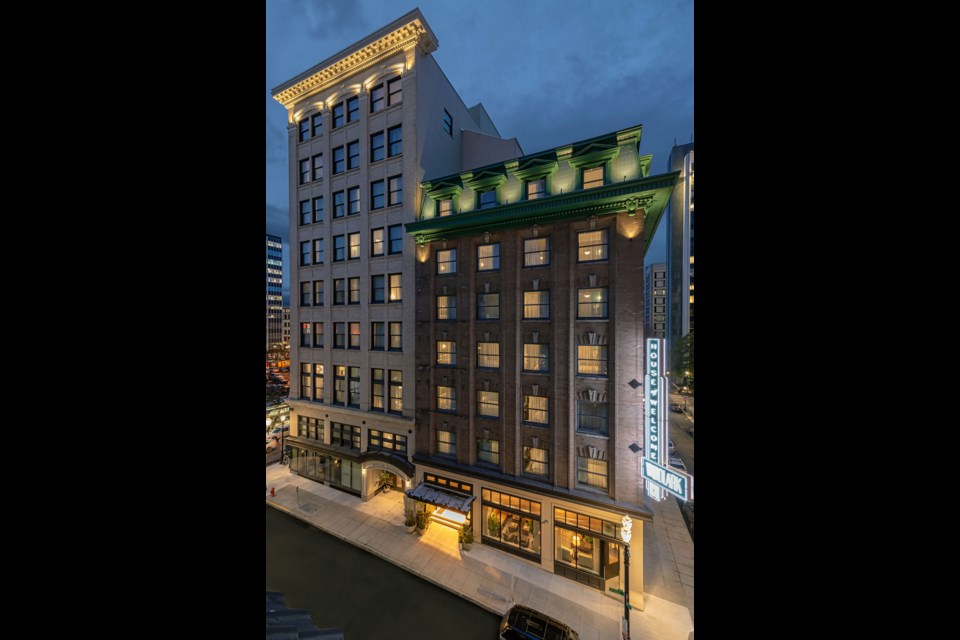Portland is a city best known for its eccentricities – it has a reputation as a hipster haven, and is a magnet for corporate creatives and craft beer lovers alike. The cityscape’s architecture draws the eye, yet defies categorization.
Mapped right in the middle of San Francisco and Seattle on a historic trading route on the Pacific coast, Portland was notoriously named in 1845 out of a coin toss between two business partners who disagreed over what to call the land they filed to claim on the west bank of Oregon’s Willamette River.
The two partners were from Portland, Maine and Boston, Massachusetts respectively, and both wanted what was known at the time as “The Clearing” named for their hometowns. If the toss had gone the other way, Portland would have been called Boston.
Getting there is a choice between a 45-minute direct flight from YVR, or a five-hour, 500-kilometre drive down the Oregon coast, where, along the way, you may take some of the most epic Instagram photos you will ever post.
Part of downtown Portland is evolving into a notable international destination with a “layered luxury” component for curious travellers looking for cultural and culinary stimulation.
On the edge of the city’s Pearl District, on South Alder Way, a recent restoration breathed new life into two of the city’s most central and historic landmarks, the Cornelius Hotel and the Woodlark Building – both listed on the National Register of Historic Places – and joined them together to reclaim Cornelius’ original moniker – the House of Welcome.
The refurbished Woodlark Hotel is 20th-century Baroque Revival architecture on the exterior, with a modern Pacific Northwest aesthetic on the interior, and opened in December 2018 as a new Provenance Hotels property.
The design direction for the hotel was led by Christian Robert and Brooks Atwood of California-based R&A Architecture. The new Woodlark tells the stories, through its design, of the city’s past and its people, says Brooks Atwood, Design Director at the architect-of-record firm.
The Woodlark’s two buildings are from 1908 and 1912 – one was built with concrete, the other with wood.
“Putting them together was complex, how the floors line-up. Historical landmarks add a whole new level of critical thinking in a way,” Atwood remembers.
On the project, Atwood thought of himself and as an archeologist and wondered,“We have these amazing buildings, so what are we going to do with them?”
A project six years on the board, Atwood was focused on archeology, digging up the history of the hotel’s buildings through old brochures, and as a result, stories of the city’s history permeate the design of the hotel.
Some of the original baroque details, like beams in the ceiling and concrete bolts in the walls were left intact because he saw them as moments in time to be captured as part of the character and history of the buildings.
“The originality and authenticity of Portland and its architecture is really captivating,” Atwood muses, noting the architecture, to him, combines the innovation of Chicago with the history of Paris.
“You’re getting a strange, amazing history. Factories, old warehouses and an ode to manufacturing, with a cosmopolitan feel,” says Atwood.The bright green trees painted on the hotel’s wallpaper tell the stories of the lush Oregon forest in what appear like modern hieroglyphics.
Aiming to design beyond the proverbial Instagram moment, Atwood incorporated details that are a nod to the past, like the analog alarm clocks in every guestroom, for those who want to take a break from the digital wake-up call. Atwood says the team went through about six digital models before they decided on the stainless steel classic.
“That’s the ideas of layered luxury – these raw materials are about being honest, and a little unexpected,” he relates.
Atwood says some of the furnishings have a sea aesthetic, in terms of the curved edges of the amenity tables, and the curved bed frames, as a nod to the city's fishing history. The hotel’s lovely library is rife with books on the city’s history, for those looking for a quiet read.
A Pacific Northwest feminist asesthetic plays a prominent role throughout the hotel, through paintings on display by female artists.
The theme of the turn-of-the-century women’s suffrage movement is especially palpable in the hotel’s Abigail Hall, an intimate, 40-seat living-room-style bar that is in the original library and Ladies Reception Hall of the former Cornelius Hotel.
The warmth of Abigail Hall is the perfect platform from which to launch into a spirited tour of the succulent South Alder Way culinary scene, which is drawing big crowds, so plan ahead and make reservations.



